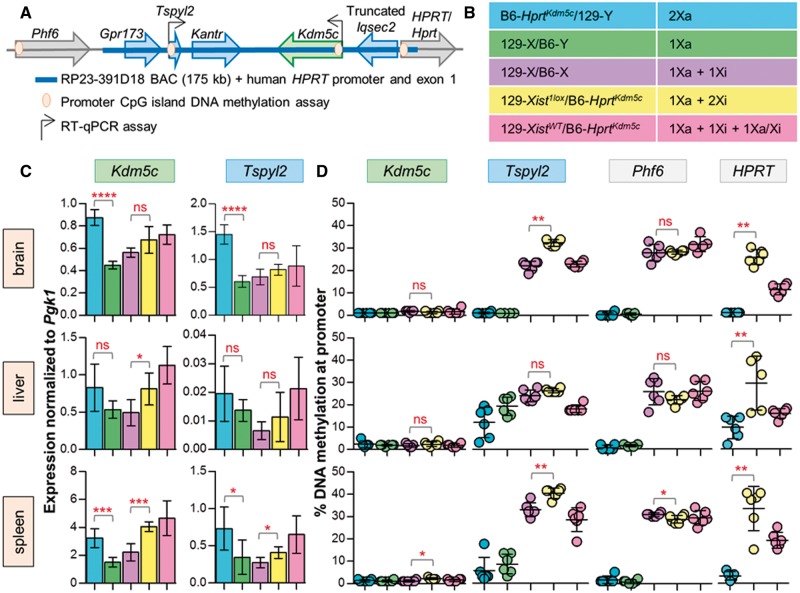Figure 2.
Analysis of BAC RP23–391D18 shows Kdm5c escapes XCI at Hprt. (A) Integration of Kdm5c BAC at Hprt; genes on the BAC expected to escape from XCI in green, subject in blue and genes at integration site (both known to be subject to XCI) in grey. Genes with RT-qPCR and DNAm assays are indicated. (B) Description of genotypes, six mice for each. (C) Normalized to Pgk1, RT-qPCR of both Kdm5c and Tspyl2 expression in knock-in males (blue) shows significantly more expression than wild-type males (green) in brain and spleen demonstrating that our transgene is expressed on an Xa. Kdm5c expression from the non-random Xi in knock-in females (yellow) is higher than wild-type females (purple) suggesting escape of the transgene, but does not reach significance in brain (unpaired t-test). Expression of knock-in females with random XCI (pink) is generally higher than non-random females (yellow). Tspyl2 expression from the Xi was significant in spleen only but not supported by DNAm. (D) Average DNAm of Kdm5c shows promoter hypomethylation in knock-in females (yellow), which supports the expression trend of escape from the Xi. Tspyl2, HPRT and Phf6 show hypermethylated promoters in knock-in females suggesting they are subject to XCI. Knock-in females are compared to wild-type females for all assays except HPRT as wild-type females do not carry the human gene (Mann–Whitney t-test, significance denoted by asterisks; P-value <0.001***, 0.001–0.01**, 0.01–0.05*, >0.05 ns).

